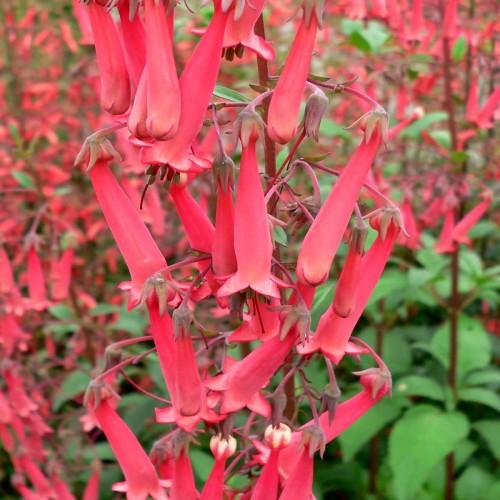
Cape fuchsia
Phygelius 'Blacher' CHERRY RIPE
Cycle:
Herbaceous Perennial
Watering:
Average
Hardiness Zone:
7 - 10
Flowers:
Flowers
Sun:
Full sun,part shade
Leaf:
Yes
Growth Rate:
Low
Maintenance:
Moderate
Drought Tolerant:
Yes
Salt Tolerant:
Yes
watering
Cape Fuchsia is an easy-to-care-for shrub that requires little in the way of water. Generally speaking, it requires approximately 1-1.5 inches of water every 7-10 days during its growing season. Watering at the soil level as opposed to the foliage is best, as the leaves of this plant are sensitive and can be damaged by water. This plant enjoys plenty of indirect sunlight and can sustain cooler temperatures, so it can be moved outdoors during cooler weather. During warmer months, the plant can handle temperatures up to 70°F (21°C). It is important to avoid overwatering, as too much can cause root rot and stem collapse.
sunlight
Cape fuchsia plants need at least 6-8 hours of sunlight per day to grow and thrive. In general, the more direct sunlight a plant receives, the better. If planted in an area that does not receive significant amounts of direct sun, the plant may have less success than if it were planted in an area that receives more direct sunlight. For best results, a Cape fuchsia plant should be planted in an area that receives morning direct sun and late afternoon indirect sun. Too much direct hot afternoon sun may cause the leaves to curl or become damaged.
pruning
Cape fuchsia (Phygelius 'Blacher' CHERRY RIPE) should be pruned in late winter or early spring, typically February or March. Pruning should remove any dead, broken, or diseased branches as well as any dead flower heads or spent foliage. To promote new growth and keep the size of the plant in check, prune back branches that are too large or overgrown by about 1-third. Additionally, trim off young shoots that are blocking airflow and light or are growing in the wrong direction.
